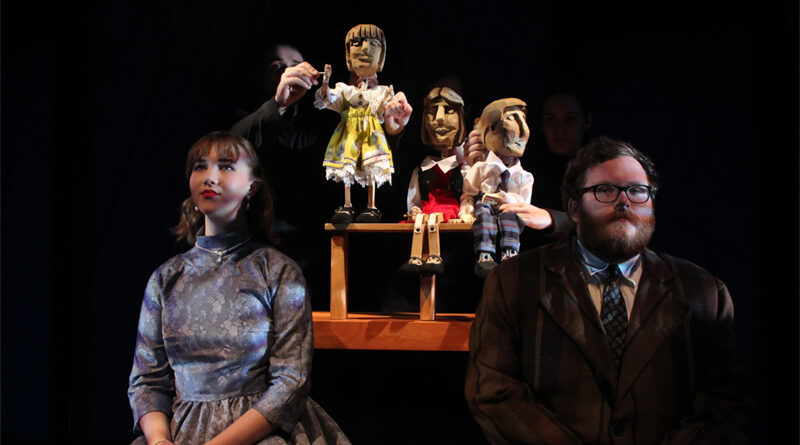Tom Burch Brings His Puppetry To Charlotte’s Black Box Theater
November 2 marks a momentous occasion for the UNC Charlotte Department of Theatre as they unveil “The Caligari Project” at the Black Box Theater. This unique production, helmed by the multitalented Tom Burch, takes center stage as a culmination of over five years of puppetry expertise and creative ingenuity. Burch, an associate professor of scenic design, last taught a puppetry class at the Department of Theatre back in 2018 when students joined him in crafting puppets for Paula Vogel’s “The Long Christmas Ride Home.”
Since then, Burch’s puppetry journey has evolved significantly. Drawing from his graduate school experiences at Northwestern University, he actively participated in the prestigious 2020 National Puppetry Conference, hosted by the Eugene O’Neill Theatre Center and led by the illustrious Artistic Director Pam Arciero, renowned for her work as a principal puppeteer on Sesame Street. Throughout this time, Burch’s scenic design expertise continued to shine, with remarkable sets designed for various productions, ranging from Children’s Theatre of Charlotte’s “Allie Kazan and the Magic Mansion” to the operatic grandeur of “Don Giovanni” for La Musical Lirica.
This autumn, Burch revived the puppetry class, embarking on a whimsical reimagining of the cult classic, the 1920 German Expressionist film “The Cabinet of Dr. Caligari,” often hailed as the pioneering masterpiece of the horror genre.
Crafting the puppets for “The Caligari Project” was a labor of love that unfolded over the summer, and as the fall semester commenced, the 12 students enrolled in the puppetry class embarked on an enchanting journey to breathe life into wooden puppets, imbuing them with lifelike movements and dramatic emotions.
While most students in the puppetry class are theatre majors, the class also welcomed two exceptional individuals from the field of architecture, Jacob Scannell and Diego Milner. Their cross-disciplinary engagement has been nothing short of enlightening, allowing them to appreciate the intricate synergy between various facets of theatrical production, from lighting and voice acting to directing and costume design.
From an architectural standpoint, Scannell reflected on the parallels he found, drawing connections between set building and model making. The emphasis on precision, time management, and creativity has enriched his architectural pursuits, infusing a new dimension into his projects.
Similarly, Milner found the behind-the-scenes workings of the theatre department fascinating, recognizing the critical role played by lighting, voice acting, directing, and costume design in bringing productions from the realm of imagination to tangible reality.
The artistic design and creativity have also had a profound impact on Scannell’s architectural concepts, infusing vitality into his projects, thereby broadening the horizons of his architectural endeavors.
For the “Caligari Project,” Burch also enlisted the creative talents of Adrian Ewens, a junior theatre major, as the costume designer. The puppet costumes are stylized, defying conventional human proportions while avoiding traditional doll-like appearances, requiring custom tailoring for a truly unique aesthetic. Ewens found this challenging yet rewarding, appreciating the freedom to bring their imaginative costume designs to life.
The culmination of this creative journey unfolds through performances running until November 5, promising a captivating experience where puppets come alive on stage. It’s a celebration of artistry, craftsmanship, and cross-disciplinary collaboration that promises to captivate audiences and ignite the imagination.

